MODERN UNIFORMS FROM THE 50S TO THE PRESENT .
|
 |
After WW11 the British army was experimenting with a layer system of winter combat uniform which was basically a copy of the American M1943 combat uniform but do to the large amounts of battle dress left over after the war they were in no hurry but then came the Korean war and the Korean winter which changed things. The combat uniform then under trials was put into manufacture which became pattern 50 combat dress. It was designed to be baggy so layers of clothing could be worn underneath to protect the soldier in winter. But it was only limited issue mostly theater issue during winter such as Korea. So the rest of the time it was back to the battle dress. During the early 1960s with end of national service and now having a small regular army the new combat dress became standard issue totally replacing battle dress but it was reclassified as pattern 60 combat dress. It was exactly the same as pattern 50 just with different labels stating it was pattern 60 until the mid 60s when modifications took place . The under arm vents disapered so did a lot of the lining and they became less baggy and oval sleeve patchers were introduced and it was made out of different material so it became more of a temperate uniform rather than a winter one.
Pattern 50 detachable hood . The tag is a sealed pattern tag. When the War Department introduced a new piece of equipment or clothing they kept back a few of the supplied items, usually those that most exactly matched the item specifications. These were then sealed as examples of the 'official' pattern. If an order for an item was then awarded to another manufacturer, the sealed pattern was sent to the company as a sample.Thanks to Rob on the militaria collectors network for this information . Note the wooden toggle on the draw string. To see a pattern 50 combat cap go to helmets and headgear field service headgear. |
Thanks to Lee Muir for sending me pictures of his pattern 50 jacket. Picture two shows how the hood attaches to the jacket and picture three showing cuff detail. |
Pattern 50 combat trousers dated 1953.
Provided on the front are two side pockets and a field dressing pocket.
On the rear one buttoned down pocket and on the sides size adjusting straps plus one map pocket on the left leg.
Provision for drawcords is also made by eyelets in the turn up at the bottom of the legs. Note the buttons on the fly as well as a zip. |
Olive drab pattern 60 combat jacket dated 1963.
It has four external pockets, on the inside are two side pockets and a large pocket at
the lower back fastened with one button plus two draw cords one in the middle and one at
the bottom. |
Olive drab pattern 60 combat trousers dated 1965. The only differences from the pattern 50 trousers that I can see are different material, less baggy, also no buttons down the fly. |
D.P.M. pattern 60 combat dress Jacket and trousers. First introduced in 1969
Its identical to the previous olive drab p60 except for the D.P.M and the elbow patches.
|
Pattern 68 combats first introduced in the early 70s to replace the pattern 60 D.P.M. combats.
The main differences between the two are the pattern 68 does not have any stitching on the collar no elbow patches and has a pen pocket on the left sleeve[see third picture] plus a map pocket on the right leg so there was now one on each leg.
Also introduced with the pattern 68 was a detachable hood and D.P.M. cap.
|
The 1984 pattern combat dress was first issued in 1985 the main differences between the 84
and the 68 pattern was the 84 pattern has billows stile pockets[see second picture] plus a small pocket on the right
sleeve for field dressings[see third pictur] and Velcro fastenings on the ends of the sleeves instead of buttons
also very little lining inside the smock. The trousers are only lined to the knee. |
Temperate pattern 90.
The main differences between p84 and p90 are 2 Chest Zips, just one Sleeve Pocket on the left sleeve
and There are draw strings at the trouser waist and on the end of the legs [see third picture].
Plus the DPM looks to be more of a mustard colour or is that just a result of different manufacturers?. |
Pattern 50 bush jacket and trousers. Note the crossed belts and buckles on the trousers.
The shoulder flash is the Formation Flash of the 17th (Gurkha) Division 1950 to 1970. |
Combats tropical jungle. made of thin material There are draw strings at the trouser waist and on the end of the legs.
Plus button down cuffs on the jacket sleeves.
Introduced in the 1972 to replace the pattern 50 Olive Green and jungle green Tropical uniforms .
Lightweight DPM Combats were known as 'No 9 (Tropical) Dress This style of Lightweight Combats continued in service till the mid 1990's until replaced by Combat Soldier 95. |
No1 dress Blues and Royals (Royal Horse Guards & 1st Dragoons) uniform. The badge on the left arm
is a French Imperial Eagle worn to commemorate the old Royal Dragoons [1st Dragoons] half of the amalgamation.
The Royals took the eagle standard from the French 105th Regiment at Waterloo
It is worn in Full Dress, No 1 Dress and No 2 Dress.
The crossed swords are a Regimental Physical Training Instructor's badge
as used by all Regiments & Corps of the British Army .
The Rank is "Lance Corporal" The Horse Guards do not use 1 chevron and all ranks are surmounted with a Crown.
The rank structure of the Household Cavalry has changed a lot over time.
The crown over the chevrons is thought to have been adopted about 1815 and originally (1797)
the only NCOs were Corporals and Troop Quartermasters.
Before 1878 Corporals wore ‘Crown over 3-bar chevron’.
In that year the rank was re-named “Corporal-of-Horse” and Corporals (same as infantry rank)
wearing ‘Crown over 2-bar chevron’ were introduced.
In 1921 Lance-Corporals were introduced.
It seems that Lance-Corporals of the Household Cavalry were wearing ‘crown over one chevron’ in 1936 but by 1941
wore ‘crown over two chevrons’.
So this practice dates from somewhere between 1937-1940-ish.
Thanks to Mike and Rob on the military collectors network for this information.
|
Sergeants grenadier guards no2 uniform.
The crossed swords are a Regimental Physical Training Instructor's badge.
I know the flaming grenade is something to do with rank but not sure what perhaps somebody can help with that one.
The medal ribbon is for northern island. |
Sergeant majors army cadet Force Worcestershire and Sherwood foresters no.2 dress uniform. Note the medal ribbons for Korea and Malaya. |
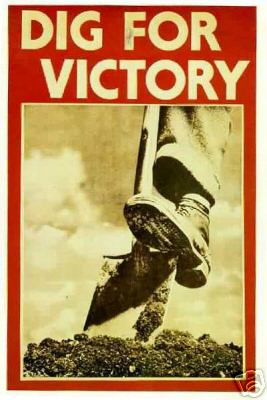 BACK
TO MILITARIA UNIFORMS AND FIREARMS. BACK
TO MILITARIA UNIFORMS AND FIREARMS. |


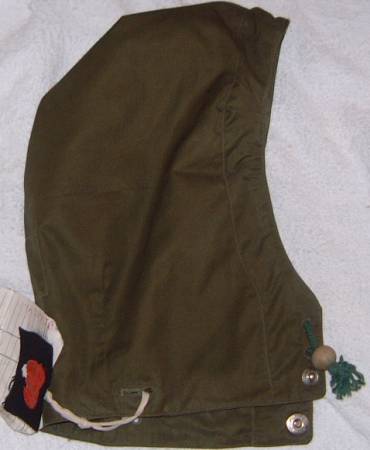
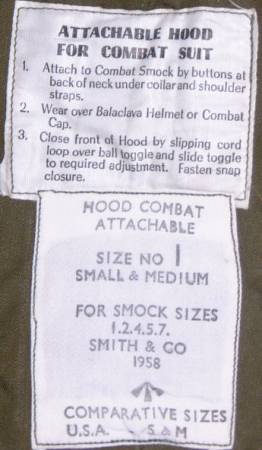
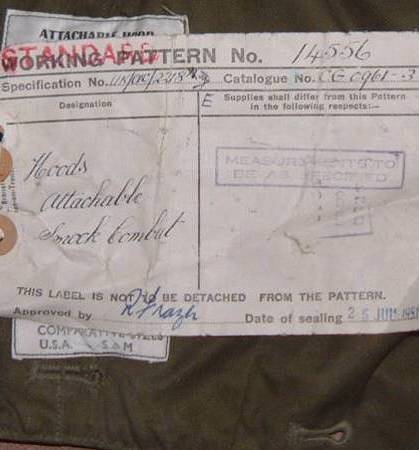

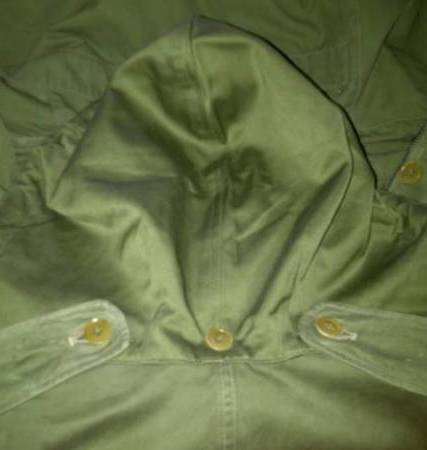
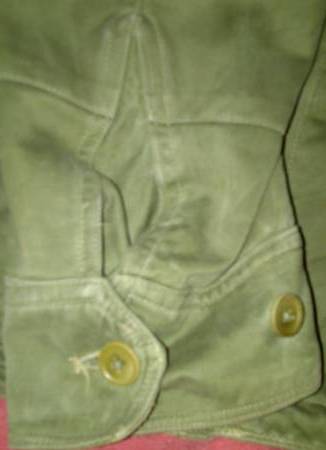
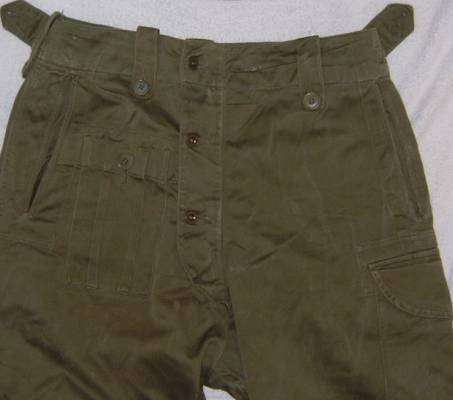
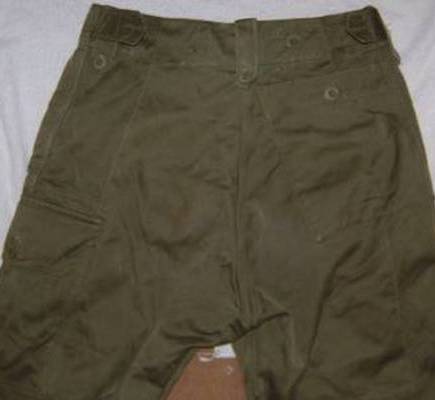
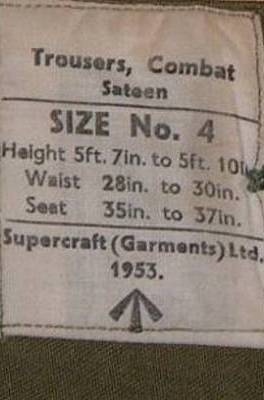
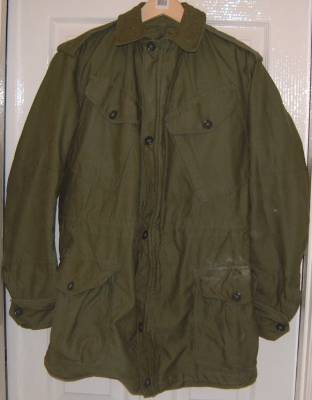
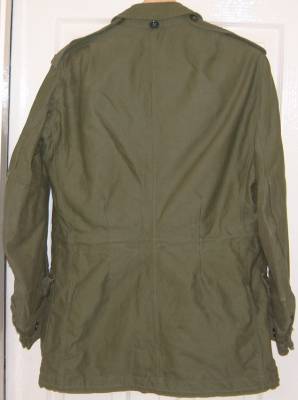
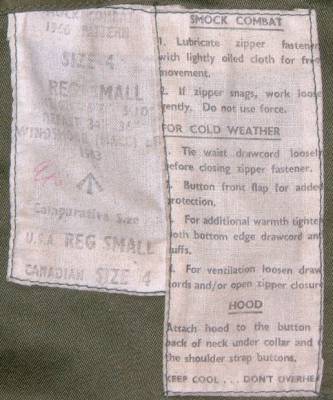
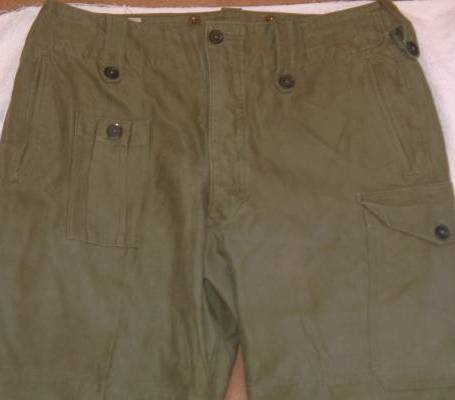
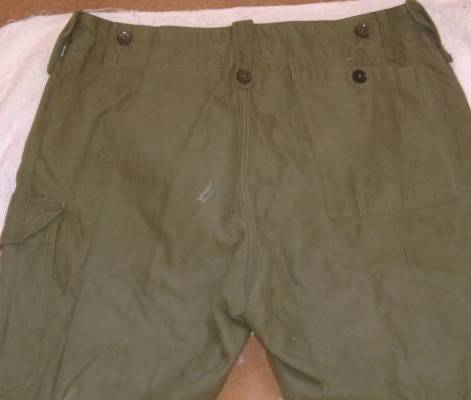


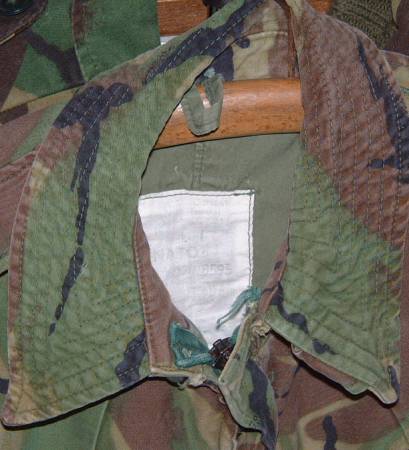
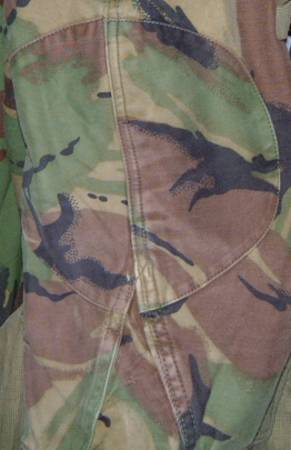
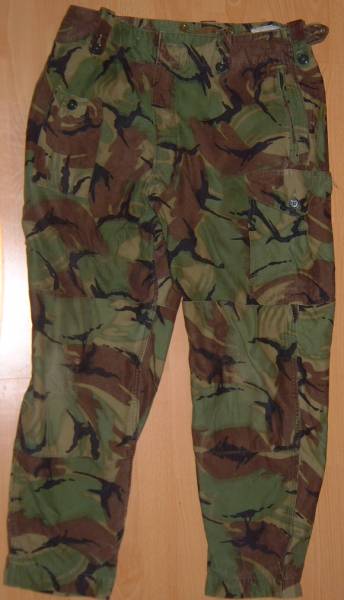

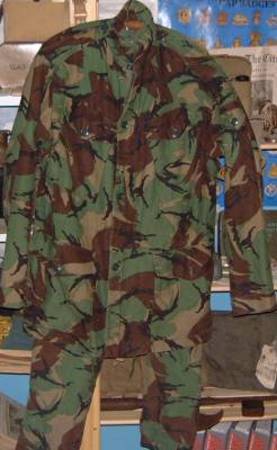
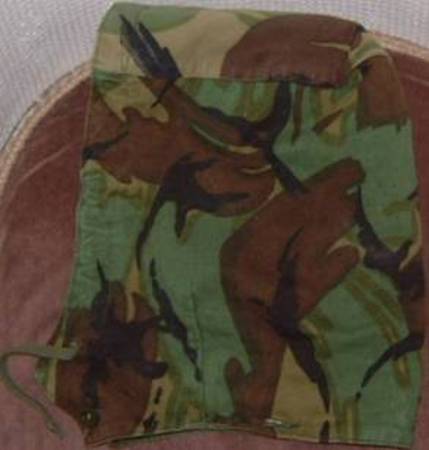
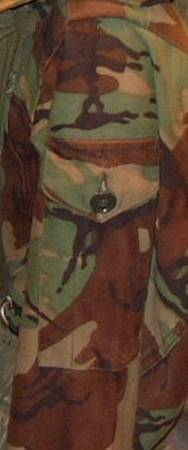
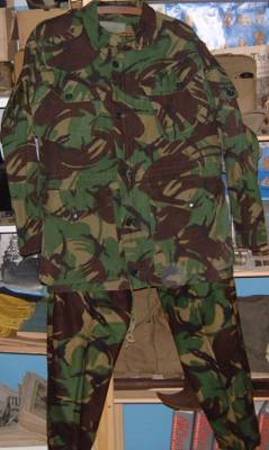
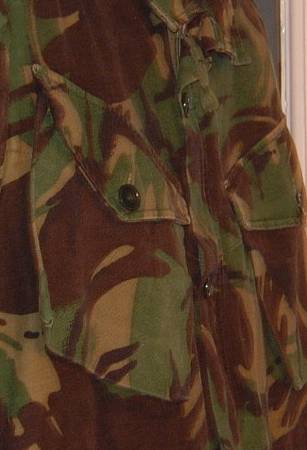
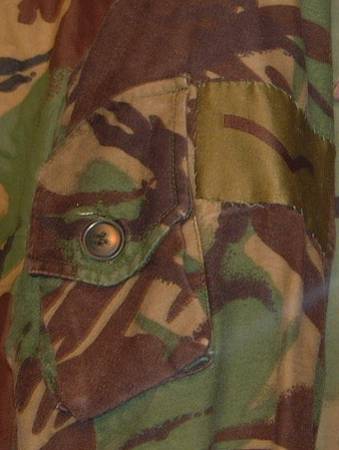

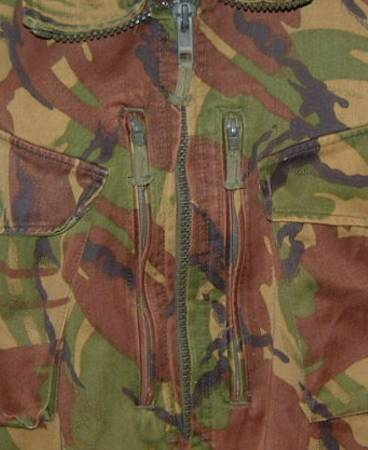
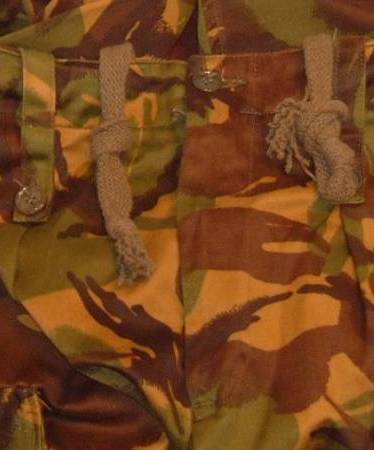


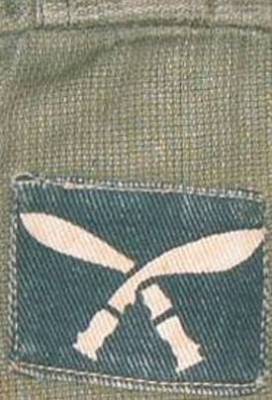
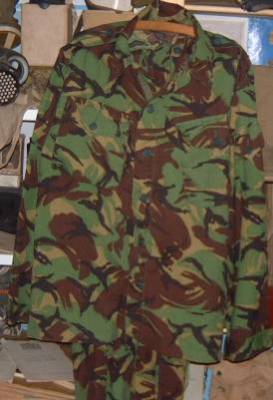
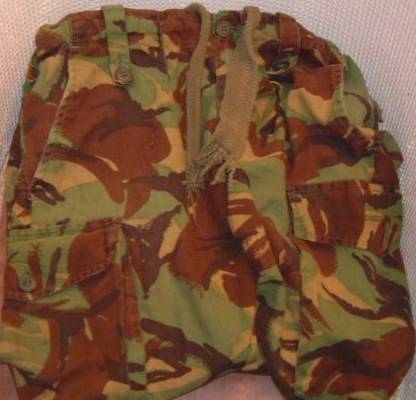
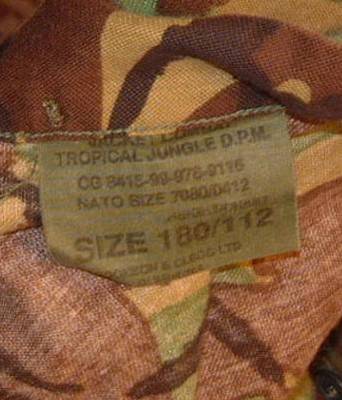
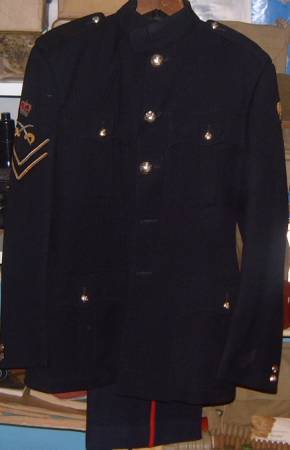
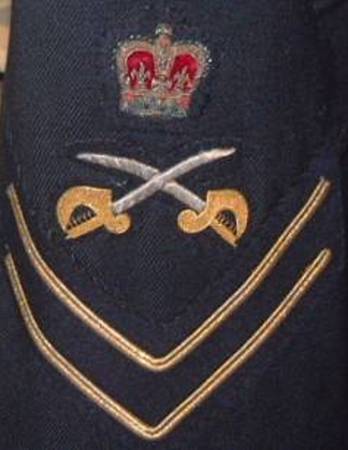
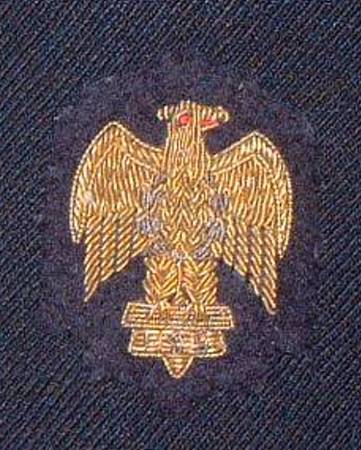
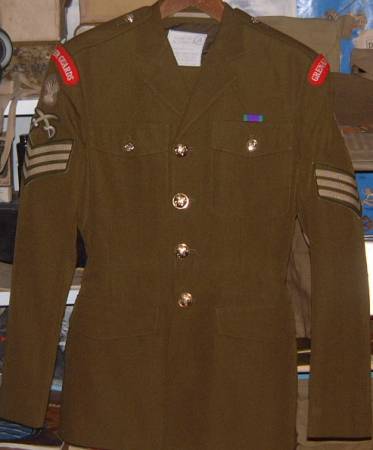
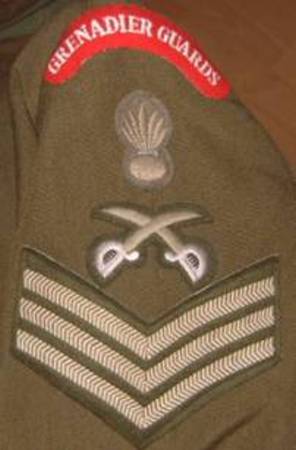
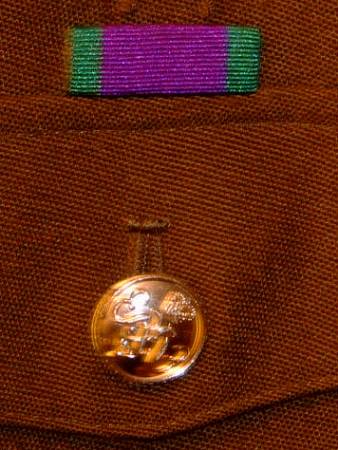
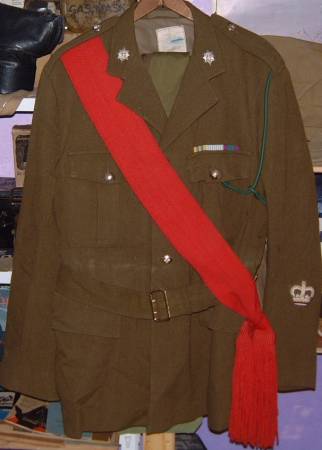

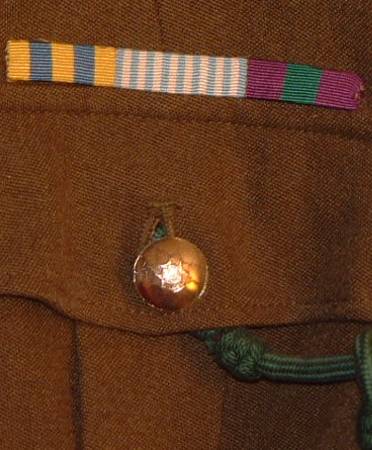
 BACK
TO MILITARIA UNIFORMS AND FIREARMS.
BACK
TO MILITARIA UNIFORMS AND FIREARMS.